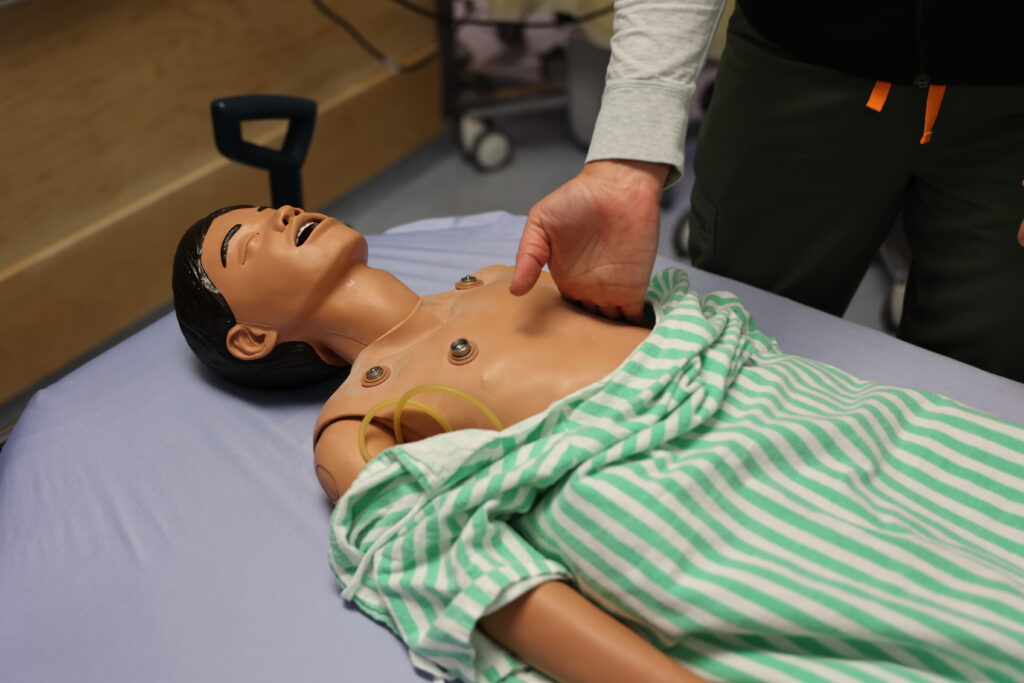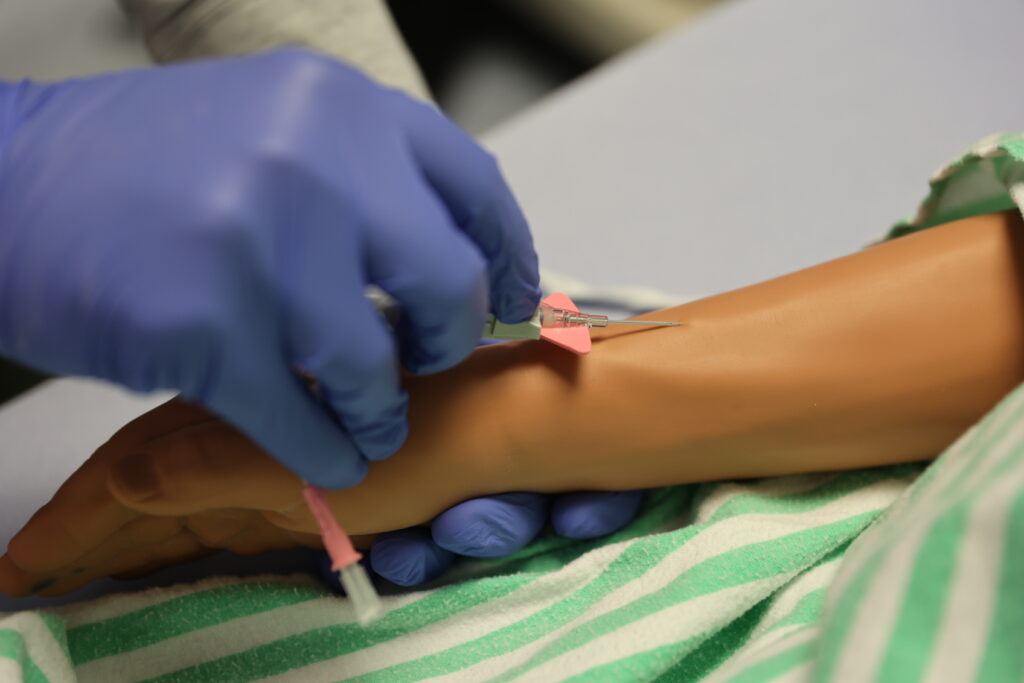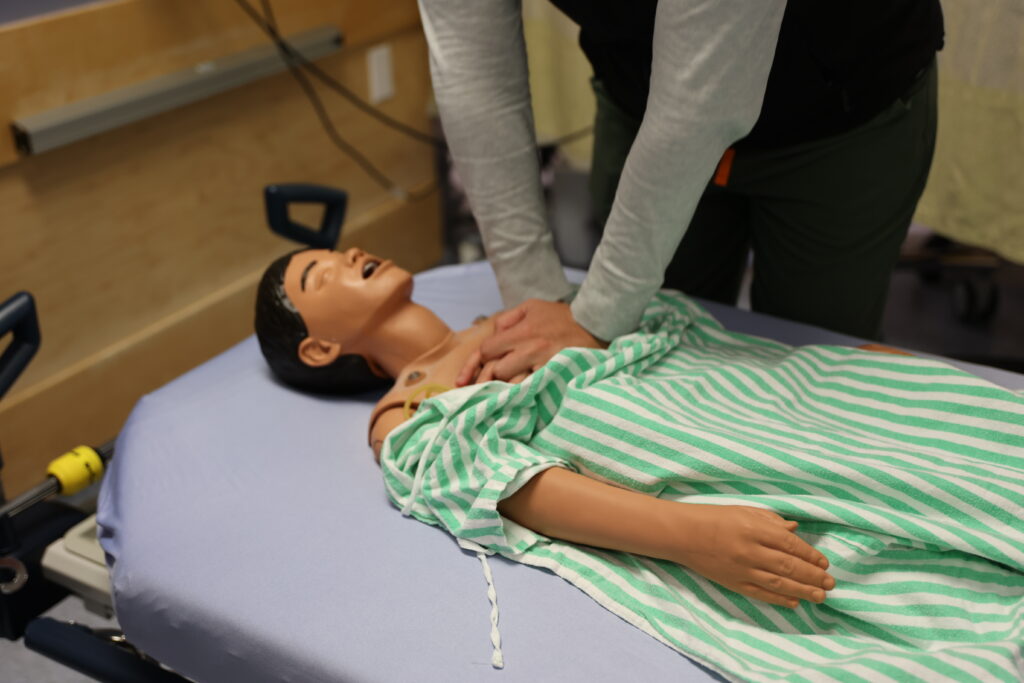News & Insights
Practice Makes Perfect – Investing in medical training with the Squamish Hospital Foundation
May 16, 2024
“Practice isn’t the thing you do once you’re good. It’s the thing you do that makes you good.” – Malcolm Gladwell
To provide the best care for patients, nurses and doctors need to continually refresh their knowledge and learn updated care standards informed by the latest science. Medical simulation dolls are useful tools that help medical professionals to practice new skills and techniques without any consequences to real patients. Also known as Sim dolls, they mimic patient anatomy and physiology, providing a realistic training environment without patient risk.

“We use simulation mannequins to practice medical skills. For our health care team, in both the emergency and surgical departments, it helps us practice skills, new initiatives and new protocols. When there are science updates, we can practice using simulation. And the doll makes it feel more real for us,” said Amy Randell, Clinical Nurse Educator at Squamish General Hospital.
Providing a more realistic training experience can be costly, with Sim dolls ranging in price and accompanying complexity, from a few thousand to tens of thousands of dollars. So when the Squamish General Hospital identified the need for a pediatric Sim doll – a doll that could simulate providing care to a child – the Squamish Hospital Foundation applied to the Woodfibre LNG Community Partnership Program to help cover the cost.
The pediatric Sim doll is a full body, fully jointed doll simulating the body of a five year old child. It’s designed to mimic anatomical feel and allows medical professionals to practice procedures like giving injections, hooking up an IV bag, administering CPR, placing intubation tubes and even using a defibrillator. The doll provides a more lifelike simulation through having simulated veins to connect to an intravenous bag, artificial lungs that can be inflated and even sensors that will record the shocks of a defibrillator.

“What we had in the past is like a torso so it doesn’t have arms or legs and you can’t use it to practice airway management. It was very rudimentary,” said Randell, “So this is wonderful to have a doll now that it actually looks like a person. It makes it feel more real and it adds to the simulation.”
Roughly 22 per cent of all emergency room visits at the Squamish General Hospital involve pediatric patients. Having the Sim doll provides the hospital staff with the invaluable opportunity to practice their skills in a risk-free setting so, when the time comes, they are fully prepared to care for Squamish children arriving at the emergency room.

The Squamish Hospital Foundation works to identify equipment and special project needs, like the pediatric Sim doll, not covered by the annual provincial or regional health budgets. Their invaluable work raises hundreds of thousands of dollars annually to advance and enhance patient care. Supporting health care is a key community investment pillar for Woodfibre LNG. Supporting the long-term health of the community matches the company’s commitment to Squamish and working with the Foundation to invest in medical devices and infrastructure, like the pediatric Sim doll or the new CT scanner for the Squamish General Hospital, provides lasting benefits for residents of the Sea to Sky region.


